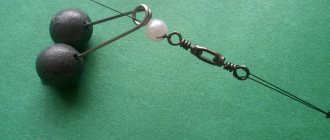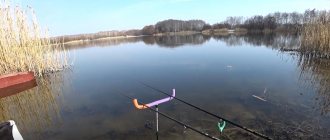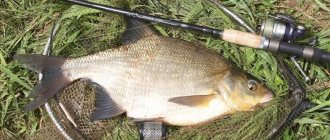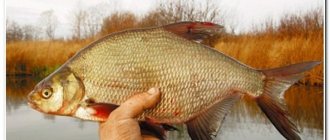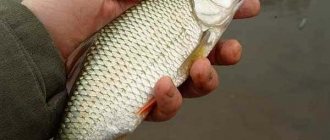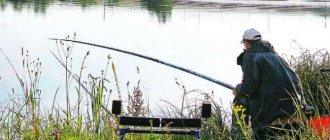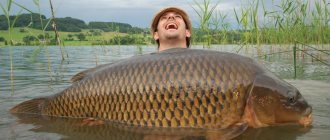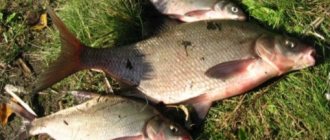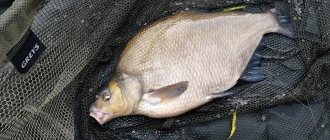How to choose the right gear
The gear is selected taking into account the specific area. A wide and fast river will require the fisherman to cast over long distances, which is why it is worth choosing a long rod around 4 meters. Ponds with standing or calm water require a shorter pole of about 3 meters.
When choosing a fishing rod material, you should choose carbon fiber. The tip test should be 120 grams. This decision is due to the fact that bream lives at depth in rivers, and the current will inevitably affect long-distance casts. The recommended reel for bream fishing is a moderate-power reel up to 4 thousand in size.
The gear ratio is preferable to 5:1, but the one that is available will do. The spool in the reel must be voluminous, because the recommended line length is 150 meters. The choice of clutch is not important, only the quality of execution is important. For catching bream, both a regular carp reel and a cheap, large-sized spinning reel are suitable.
The recommended cross-section of the fishing line is 0.2 millimeters. It is best to use monofilament fluorocarbon line. Although braided fabric is highly durable, it wears out quickly. The leads should also be fluorocarbon with a cross-section of 0.2 millimeters. When choosing a feeder, you should focus on cages.
In other words, open type feeders. The rounded form factor is of little use in conditions of strong current. Recommended weight: 120 grams. With such a weight, the current will not have time to move it much during its descent to the bottom. Oval-shaped feeders are recommended for ponds with standing water or weak currents.
As a rule, they are distinguished by large holes for rapid distribution of food. The choice of hook depends directly on the size of the fish. If you are fishing for large specimens, then you should choose a hook from No. 7 to No. 10, and for small specimens, No. 10-14 will do.
Feeder equipment suitable for current
There are several types of equipment when using a feeder:
- The Gardner paternoster (loop) is an easy to use and highly effective option. Ideal for a beginner. Among the shortcomings, it is worth noting that after several casts the line begins to curl. To solve this problem, you need to spin the feeder by weight. If twisting becomes a serious problem, you should replace the monofilament line with braided line.
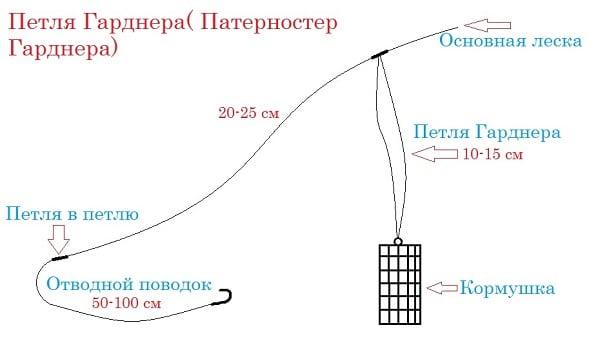
- Symmetrical loop - knitted evenly on both sides while maintaining the same length. On the one hand, it is attached with a carabiner to the main fishing line, on the other hand, leashes are tied to it.
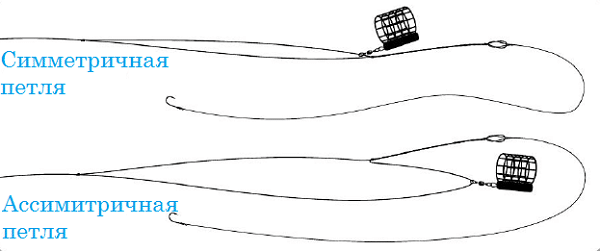
- Asymmetrical loop - is the same tackle as symmetrical, except that one of the sides is longer. This device allows you to notice that the bream is interested in the bait even before it feels the weight of the feeder.
- A helicopter and two knots is a tackle designed for fishing with light bait. Fishing using a helicopter is carried out in a suspended state. In this case, the leash extends with the current, arousing interest in the bream.
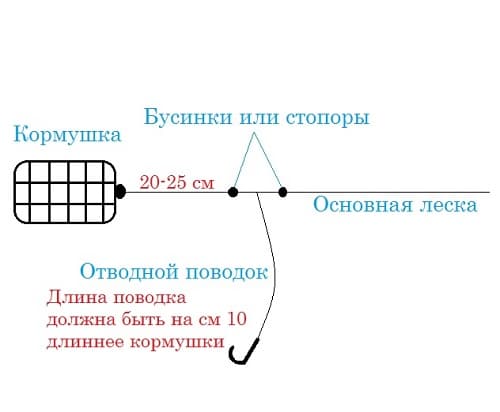
Feed mixture for a river with a current
If fishing is carried out in a reservoir with a strong current, it is necessary to feed the fish above the fishing spot.
Recipe for bait mixture for bream:
Required: Breadcrumbs - 100 grams Cake - 100 grams Rice - 100 grams Rye bran - 100 grams Lard - 50 grams Ground coriander - 1 teaspoon Maggot Clay
Preparation:
- Mix cake, bran, cooked rice and crackers.
- Cut the lard into small pieces and add to the mixture
- Add coriander
- Add and mix maggot. Recommended quantity: 2-3 matchboxes
- Add clay to the food. It is best to add it directly on site.
The clay in this recipe serves as a weighting agent and gives greater density to the feed. Without it, the current will quickly wash away the complementary foods.
Catching bream on a feeder in spring and summer video
Fishing for bream on the river video
Catching bream and bream on a feeder on a river with the current video
TV channel "Hunting and Fishing"
Excellent morning bream bite
Bream on the feeder. Video report about fishing on the southern dam of the Gulf of Finland in St. Petersburg. The bream was actively biting on the feeder; the bream was especially active in the early morning, before 8 o’clock. After an unsuccessful trip, I finally decided to give revenge to the southern bamba. This time the weather was just great and the bream were biting constantly. I used maggot + worm as bait; I added chopped worm, maggot and boiled peas to the bait as additional components. I tested the Running Feeder Rig, a new rig for myself, on beaded rubber, I was very pleased with it, I will definitely be fishing with it in the near future.
How to make precise casts to one point
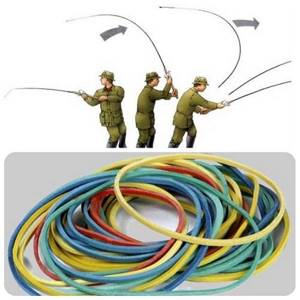
Successful fishing requires a lot of accurate casts. For example, when using a boat there is no such problem, since there are no long casts. If there is a large spread of complementary foods, the fishing efficiency will decrease significantly. A larger feeding area will allow the fish to spread out and ignore the bait. The range is fixed using an elastic band that is attached to the reel.
Unlike a clip, an elastic band will allow the fish to pull back the line when biting. This is an important point when catching a large specimen, which can break the gear if it begins to resist sharply. Also, marks are made on the fishing line with a marker. The drawn points will allow you to maintain the required range even if the elastic band is lost.
Similarly, you can count the revolutions of the reel when casting (or when pulling the feeder out of the water). This will help restore the necessary casting parameters if the line breaks. Hitting accuracy can only be achieved through practice. Try to take a certain point as a reference and refer to it while casting.
After an unsuccessful cast, you must immediately raise the tackle so that the bait does not have time to sink to the depth. If it reaches the bottom, the effectiveness of the bite will decrease due to the dispersal of the fish over a large area.
Wobblers that catch 100%:
Shimano FX
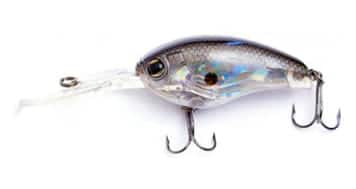
More details
Shimano FX
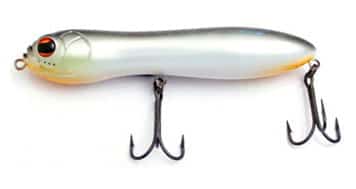
More details
Shimano FX
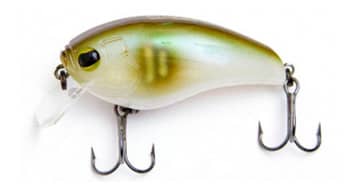
More details
Shimano FX

More details
Feeder bait
Choosing bait is an important part of catching bream when using feeder equipment. Bream senses food up to a quarter of a kilometer away. In addition to the attractive aroma, the color of the food is also important. The hearing of this fish is also sharp. Do not make any noise while fishing.
Due to his cautious habits, he immediately retreats at the first sign of a threat. Complementary food is formed based on the characteristics of the fishing spot. A strong current will require a denser and coarse-grained bait, while in standing water conditions it is worth reducing the density so that the food is washed away at the required speed.
It is not recommended to use hemp, sunflower seeds or coconut as ingredients. The complementary food must be soaked 10 hours before fishing and left in a dark room so that the components mix and swell. Coastal soil as an additive will help even out the smell of food for wary bream.
It is important to note that your food must contain the same ingredient that is used as bait. Animal components, such as maggots, must first be doused with boiling water to avoid being washed away by the current. It is recommended to use corn or pearl barley porridge as vegetable complementary foods.
Color
In addition to smell, bream also navigate using vision. The color of the bait is also important, as is the smell. The tastes of fish change in different seasons. In the warm season (Late spring-summer), bream prefers yellow, green or red food.
Autumn, due to the change in diet to predominantly animal, is characterized by black, brown or red colors. Red color is, in principle, an all-season option. In addition to the time of year, it is necessary to take into account the transparency of the water, the weather and the soil at the bottom.
It is recommended to stock up on several color pigments in advance at a specialized store.
Smell
Smell is a decisive factor in complementary feeding. Bream prefers sweet confectionery aromas. Suitable flavors include chocolate, cinnamon, pineapple, vanilla or cocoa. Anise and coriander are considered the best options.
In addition to the above aromas, bream responds well to plant odors. Peas, sunflowers or corn work well for bait. For the cold season, you should give preference to dry blood.
Long casting in running water
Feeder fishing is great for any body of water. To fully realize the potential of such fishing, it is worth using it at least once in current conditions. Running water makes the task much easier, spreading bait throughout the pond.
This attracts fish from the water area. However, such fishing also has its weaknesses, which can be minimized and turned into advantages.
Fishing area equipment and rigging
Coping with the fast flow of the river is not easy, but it is possible. To do this, you need to come to the reservoir in advance and prepare a fishing spot.
There are a number of tricks that professional fishermen have been using for a long time:
- Don't choose a location that your equipment can't handle. You'll just waste time and won't be able to catch anything.
- Increase the weight of the feeder, this will help hold it up. Do it gradually. If there are no heavier feeders left, attach a weight to it.
- It’s a paradox, but for feeder fishing in the current, a thin line is better suited.
- To avoid drift, try raising the feeder to its maximum height.
- The current near the shore is much calmer, so it makes sense to cast the feeder closer.
- It is optimal to use a triangular-shaped feeder or one with hooks on the bottom.
- The top on the feeder should be rigid.
- The fishing line and cord can be released, creating a kind of loop in the water. This method does not work in all cases.
Feed mixture for current
The main criterion for creating bait is its viscous texture. In this state, it will successfully reach the bottom. This will create a specific sector where the fish will swim.
The following recipe works great in current conditions. Mix 100 grams of rye bran, 100 grams of breadcrumbs, 1 tsp. ground coriander, 50 grams of unsalted lard and 100 grams of boiled rice. Pre-cut the lard into small pieces.
To feed bream, add maggots or bloodworms. Mix the clay to create the most suitable consistency.
Fishing for qualifying bream
If the bite is powerful and confident, then you have a large bream on your hook. The tackle must be monitored at all times and be ready to hook at any time. Self-hooking equipment does not always work, so it is better to be safe.
If you successfully hooked a fish, then under no circumstances should you drag it with a feeder reel. It is quite difficult to immediately pull a bream to the surface. Underwater, the fish behaves much calmer. Smooth movements of the rod give it the desired direction. If the bream takes a breath of air, then it begins to desperately rush around and it will become difficult to pull it out.
When you have brought the fish to the shore, you can put it in the landing net. To do this, loosen the line, but leave it taut. So, if the bream makes the last jerk, it will not be able to break the leash.
Baits used
The choice of bait is determined by the time of year. In cold seasons - early spring or autumn, bream are more willing to bite on animal baits. A worm or bloodworm is perfect for fall fishing. In summer, bream is predominantly herbivorous. Vegetable baits such as fermented corn or peas work well in the warm season.
Most grains and legumes will do. You can also use various larvae, or combine them with plant elements in the form of a sandwich. Artificial baits are worth mentioning separately. Silicone bloodworms or foam balls will also work for voracious fish.
A sandwich of two maggots, a worm and a garlic boilie gives excellent results when catching bream even in low-bite conditions. It is important to remember that fishing is carried out mainly in the dark, when the fish goes out in search of food towards the shores and shallows.
Plant based baits
As a plant bait, you should choose one of the following options:
- Peas. Used steamed
- Corn. Recommended in two variations, either regular canned or fermented, that is, fermented
- Pearl barley
- Mastyrka
In case of low biting frequency, it is worth combining plant and animal baits:
- Maggot and bloodworm
- Corn and maggot
- Corn and worm
Basic habits of bream in the spring season
Bream is considered a very shy fish. In spring, when the water is especially clear, this is very noticeable. Trying to catch bream in April using a fly rod is not even worth trying, even if you succeed, it will be more likely just an accident than a pattern. The situation is completely different with the feeder; you can catch a real trophy with it. Today, this tackle is considered the most popular method for catching bream. Almost all fishing enthusiasts who use this equipment and have a general knowledge of the spring habits of bream, taste preferences and, of course, parking places, return home with a good catch.
When choosing a fishing spot, you should be guided by several points: as soon as it gets warm outside, this type of fish rises from the depths and tries to stay close to the shore, at a maximum depth of 5 meters, in places where there are many irregularities on the bottom. These places attract fish because it is in the recesses of these bottom irregularities that quite a lot of food usually accumulates, which is very important especially in the first half of spring, also at shallow depths the water warms up faster and a higher constant water temperature is maintained and of course there is another a factor that is perhaps one of the most important is the presence of oxygen in the required quantity for more active behavior of the fish during the period of active preparation for spawning.
It is through these areas that migration paths pass, which the fish constantly visit. Finding these trails is very difficult, so the only landmark is the bottom with a lot of different snags, silt and holes. At night, if the weather is good, the bream swims closer to the surface, but practically does not bite. Bream very rarely looks for food near the surface, mainly only in the bottom area, where worms, larvae, mollusks and so on are found. In early spring, when food is quite scarce, fish can feed on pieces of algae.
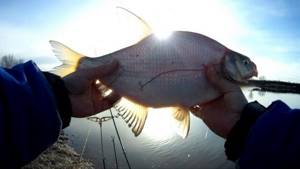
Feeder is the best tackle for catching bream in spring
Using a feeder, you can throw bait at different points, which allows you to find the best places for fishing. There are a lot of feeder models, so anyone can choose the ideal option for themselves. An important feature of this equipment is sensitivity, which allows you to notice the weakest bites. The length of the tackle depends on the distance. Three meters will be enough for small reservoirs, 4 for wide ones. It is better to use a simple reel with a blank. Most often, a monofilament thread is used; its average diameter should be 0.25 millimeters. The cord is completely unsuitable at this time of year, since a large amount of debris collects on it. The diameter of the leash should be slightly smaller - 0.18 millimeters. The hook is practically the same throughout the spring. Their size is selected depending on the bait.
Feeder for catching bream on a feeder
The choice of feeder is very dependent on environmental conditions. If we are fishing in a reservoir with a strong current, then this part of the equipment must be heavy (from 80 to 120 grams), the load must be flat and be on one side of the feeder so that it lies on the bottom even with a strong current, otherwise it will move will scare the fish. If you don’t have a feeder of the required weight with you, you can simply modify it with a sinker for spinning fishing. If this is not possible, the best option would be to find an area with a less strong current. It is recommended to use a long leash - approximately 80 centimeters.
The bottom topography is also an important factor. If the current in the reservoir is not strong, and the bottom is very uneven, and even if fishing is complicated by the presence of a large number of snags, then it is recommended to use plastic feeders weighing 0 to 40 to 60 grams. Of course, since they are lighter, they sink to the bottom more slowly and can leave a large mark, starting to spray bait already in the upper layers of the reservoir, but in this situation this is more of a plus than a minus, since bream loves turbidity. And besides, when fishing, the likelihood of getting caught on a snag is sharply reduced, since a plastic feeder floats to the surface much faster than an iron one.
Baits for catching bream in spring
When choosing bait for catching this fish in the spring, it should be noted that in early spring it prefers bait of animal origin (bloodworms, maggots, caddis flies, worms). Sometimes baits of animal origin are combined with flavored semolina or dough.
In mid-spring, bream requires high-calorie food and mainly focuses on bloodworms, maggots and dung worms. And finally, towards the end of spring, bream eats quite a lot, when the water becomes warmer, it’s time to use bait of plant origin. You can use the favorite baits of this fish - canned corn, pearl barley, mash, dough, green peas, bread and pasta. You should also not avoid experimenting with different combinations of these baits.
Fishing for bream after biting
The feeder is a catchy and convenient fishing tackle. The bite can be read without problems by the sharp bend of the tip. You need to hook sharply, but not sweepingly, so as not to scare away the rest of the fish. Do not underestimate the bream, it uses the force of the current to resist the fisherman and will try to move downstream.
Active fish must be slowed down using a fishing rod. Using the drag on the reel, you need to jerk the line out and wait for your opponent to tire. After this, you can pull the prey to the shore.
You can use a landing net to pull it out. Care must be taken not to provoke a tired fish into a final push and not to lose the tackle. Don't rush, let the bream get tired. Calmness when fishing also ensures that the rest of the fish will remain near the bait and will not swim away due to panic.
Features of seasonal fishing on a feeder
The behavior of bream is directly related to the current time of year. Depending on the season, it is necessary to observe a number of subtleties when fishing with a feeder.
Spring
The feeder should be used when the temperature of the reservoir rises to 10 degrees. The fish begin to swim in the shallows and prefer mainly animal bait. A worm or maggot will do.
The end of April is marked by an almost complete absence of bite. The reason for this is spawning. The activity of bream appears already at the end of May, immediately after the end of spawning. At this time, the bream returns to its usual places. As a rule, these are holes and depressions in reservoirs. It is at depth that you should look for bream in late spring.
Summer
Starting from June, it begins to actively search for food. The most favorable start for fishing is considered to be mid-June. Not hot enough for the bream to go too deep, but warm enough for the fish to be active. It is necessary to examine the bottom of the reservoir in advance for holes and depressions.
An echo sounder is the ideal device for this, although a marking rod will also work. Preparing a feeder and fishing in the summer season is not difficult; all standard solutions will bring the desired result.
Autumn
Early autumn is great for feeder fishing. Bream, preparing for the winter period, actively searches for food and increasingly swims to the shores. Late autumn is characterized by a strong decrease in activity, and fishing areas are narrowed to wintering pits, in which it lives most of the time.
When it comes to bait, preference should be given to animal baits.
Weather conditions are an important factor
Weather conditions are an important factor when fishing. In case of low temperature and strong wind, the chance of successful fishing tends to zero. Hot weather greatly reduces the activity of bream, and the fish prefers to wait out it passively at depth. In such conditions, fishing may also be ineffective.
But rain, on the contrary, increases efficiency. This is due to the enrichment of the reservoir with oxygen and increased metabolism in fish. In strong winds, it is recommended to take a position in which the wind will be directed to your face and not to your back, so as not to spook the fish.
Feeder in still water
Feeder fishing in still water and on the current has many differences. A beginner can make a lot of mistakes and become disappointed in fishing. Thanks to some tricks, you can increase the efficiency of fishing in general and catching bream in particular. Let's look at the main nuances of bait, installation and throwing technique.
Functions of various baits, flavors and mixtures
For feeder fishing, bait is the most important step on which success depends. First of all, you should focus on the preferences of the bream. Both ready-made universal mixtures and individual components may be needed.
First of all, bream pays attention to the nutritional value of the bait. If there is nothing significant in it, flavors alone will not be enough and the fish will swim further. The favorite food of bream is pearl barley, millet and canned sweet corn.
Before fishing, it is better to prepare two different mixtures. At home, cook porridge, and on the shore create fresh “dust-like” bait. Mix until the consistency reaches such a thickness that the bait reaches the bottom, but easily leaves the feeder.
Large bream will appreciate it if it contains not only millet, but also maggots and chopped worms. However, even without these delicacies, the fish will feed at the casting point. To attract it, they start with fine ground bait. The aroma spreads quickly and attracts small items. After a while, bigger fish will appear.
Next, bait with a larger fraction is thrown. After the first bite, you can adjust the “table” by alternating different baits or mixing them. A good catch of bream will be guaranteed!
Feed recipe
For feeder fishing in any conditions, a universal bait recipe has always worked.
To prepare you will need:
- 400 gr. wheat;
- 200 gr. Hercules;
- 100 gr. roasted sunflower seeds;
- 400 gr. breadcrumbs;
- 100 gr. milk powder;
- 300 gr. corn grits;
- 50 gr. flax;
- 50 gr. vanilla sugar;
- food coloring or red beets for color.
The recipe is very simple and inexpensive. Fry the wheat until golden brown for 10-12 minutes. The oatmeal also needs to be fried until brown along with the flax seeds. Grind cereals and seeds in a coffee grinder. Add corn grits and breadcrumbs.
Stir and add milk powder, vanilla sugar. For color, grate half a beet and mix it with the bait. The mixture is ready. It can be stored for up to six months. It perfectly attracts fish due to its color, smell and rich composition.
Installation
The most effective equipment for feeder fishing is the Gardner paternoster. It is perfect for still water, attracts bream and is easy for beginners. To avoid twisting of the line, the feeder must be lifted after several casts and allowed to unwind.
This only applies to monofilament fishing line. When using braid, the problem does not arise.
Throwing technique
The throw must always be performed accurately and quickly. It is important to hit the same point with the feeder feeder. By fulfilling only these two conditions, the number of bream in your cage will double.
You should not spread the bait over a large area. Limit yourself to a small area. Throw the feeder there too. To secure long-distance casting, a special rubber band is used. If you don’t have one, you can use a regular bank account.
It must be clamped in a clip on the spool and wrapped twice around the spool itself. Additionally, beginners can mark the working distance with a marker on the fishing line.
Measuring the depth and searching for a fishing spot
A rod and a spinning reel are the main tools for measuring depth. A small sinker weighing up to 60 grams is attached to the fishing line. The marker float should move freely along the line. When the marker floats up, the line must be reeled in, counting the reel revolutions to the maximum.
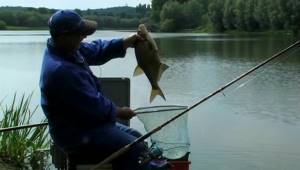
The depth has been measured, all that remains is to resort to simple mathematical calculations. Multiply the length of the fishing line that corresponds to the revolution of the reel by the number of revolutions. The result will be the depth of the reservoir at the casting point.
To find a fishing spot, it is important to study the bottom. To do this, small casts are made with a sinker weighing up to 60 grams.
When the sinker reaches the bottom, the rod is slowly dragged, recording all changes.
Pay attention to vibration and shock.
If the bottom is muddy and soft, overgrown with algae, then a light but constant load is felt. On a clean, hard surface there is minimal resistance to movement. If there are shells, then tapping is often transmitted to the hand. There is no resistance when falling into a hole, but a push is felt when reaching the bottom.
These are the most common types of bottom. A leisurely study of them will help you choose the optimal sector for feeder bream fishing.
Excellent baits
Bream is a picky fish in its choice of food. However, to attract larger fish, it will be better if the fish finds a maggot, worm or mast on the hook. A “sandwich” made from a worm with maggots has long proven itself.
The treats on the hook alternate. For large bodies of water, large bloodworms, corn, and pearl barley are suitable. It is better if the bait does not repeat the groundbait, but rather stands out against its background.
Bream biting during the spawning period

After the spawning process they disappear. It is from them that the fisherman can navigate what stage the fish is at. Spawning time primarily depends on water temperature. In the south it begins in mid-April, and in the northern regions bream begins to spawn only in May. The average water temperature for spawning is 15 degrees. Three-year-old breams begin to spawn first, and only then large individuals. The average spawning time is 3 days, after which the flocks return to their usual habitats.
The fish prepares for spawning in advance; it can be roughly divided into three stages:
- Awakening . They begin to become more active while still under the ice, but already feeling the spring water. They begin to actively feed to prepare for spawning
- Path . It begins its movement towards the spawning ground when the ice melts. The fish swims against the current for several kilometers. This period is also associated with active nutrition
- Arrival . In early May, flocks arrive at the spawning site.
The main thing when fishing during the spawning period is to determine the location of the school. Abundant feeding will retain the fish and allow you to collect a large catch. Fishing at the spawning ground itself is carried out on those groups of individuals that are actively feeding while others are mating.
It is worth considering the peculiarities of fishing in a particular region. Throughout most of Russia, fishing is currently permitted using only one hook, but there are places where fishing is completely prohibited. Therefore, before leaving, try to find information regarding fishing in this area. This can often be done on the website fish.team, where they write in detail about the prohibitions during a given period of time.

